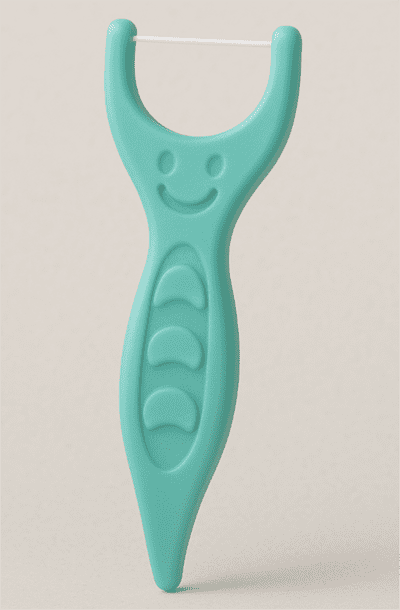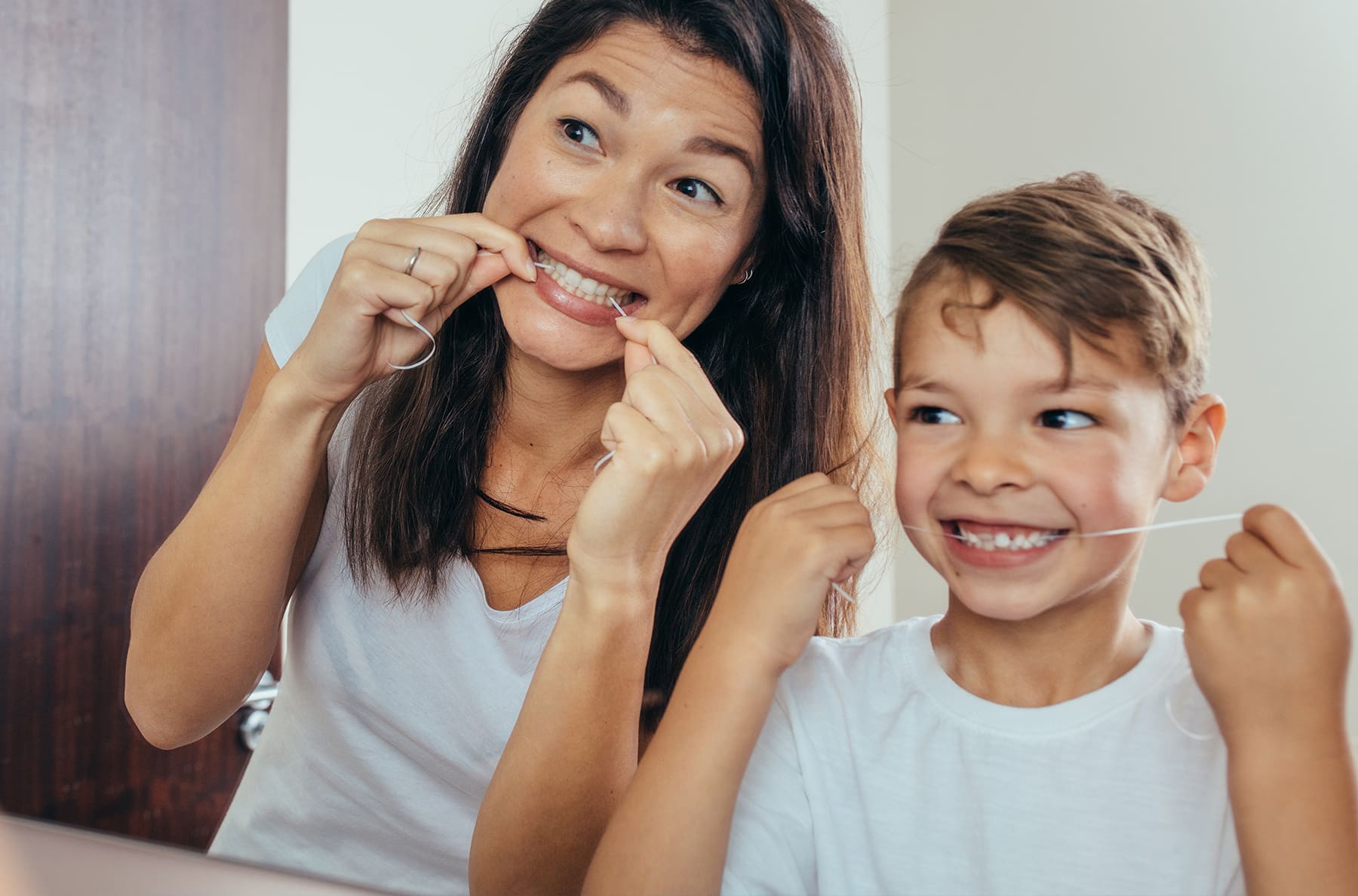Reviewed By Dr. Jodi Kuhn
Reading time: 3 minutes
Getting your kid to floss can feel like trying to convince a cat to take a bath—lots of resistance, minimal cooperation, and a surprising amount of drama. Still, it’s worth the effort: those sticky spots between teeth are where sneaky cavities love to hide.
In this blog, you will learn when to start flossing your child’s teeth, how to teach proper technique, and which flossing tools work best for kids.
We are always accepting new patients at our offices in Denver, Aurora, Thornton and Hampden.
Table of Contents
Key Takeaway
Flossing should start as soon as two teeth touch. Whether you use picks, string, or eventually a water flosser, what matters most is making it part of your child’s daily routine.
When To Start Flossing
You should start flossing your child’s teeth as soon as any two teeth touch—which can happen as early as 18 months, but typically around ages 2 to 3.
Flossing clears away plaque and food particles from between teeth, where a toothbrush cannot reach. If that buildup sits too long, it can lead to cavities and inflamed gums, even in baby teeth.
By starting early, you help prevent problems before they start and make flossing feel like a normal part of daily life. In the beginning, you will need to do the flossing for your child. Around age 5 or 6, your child can start learning how to do it with your guidance. The earlier you start, the easier it becomes to build lasting habits.
Want to know when they can take over brushing too? Check out: At What Age Can Kids Brush Their Own Teeth? A Parent’s Guide to Independent Brushing
How To Teach Your Child To Floss
The earlier flossing becomes part of your child’s oral healthcare routine, the easier it will be to stick with it. Follow these tips:
- Use floss picks made for kids because they are easier for small hands and developing motor skills than traditional dental floss.
- Show them how to use the dental floss by guiding it gently between the teeth and hugging each tooth in a C shape along the gum line.
- Practice flossing together and allow your child to try after you demonstrate the proper technique.
- Floss at night after brushing so it becomes part of the regular bedtime oral hygiene routine.
- Keep flossing fun by using a chart or offering small rewards to encourage daily flossing.
For more tips on how to make flossing fun, check out: Flossing for Kids: Why It’s Important and How to Make It Fun.
What Is The Best Floss For Kids?
The best floss is whatever makes it easiest to build a consistent habit. For toddlers and younger kids, floss picks with small, easy-to-grip handles are usually the most practical option. They are less messy and more comfortable for both you and your child.

For kids with very tight teeth, waxed string floss works better than unwaxed because it slides more easily between surfaces. Some parents prefer using a floss holder, which gives you more control than string alone but still fits in small mouths.
As kids grow and develop better dexterity they can start practicing with regular floss if they prefer. But there is no rule that says they have to “graduate” from floss picks. Use whatever works best for your child’s mouth and motor skills.
Kid-friendly floss picks like this one are easy to grip, gentle on gums, and a great way to help your child build a healthy flossing habit early.
Can Kids Use A Water Flosser?
Water flossers are not a must-have for young children, but they can be a helpful tool in the right situations. Some kids with braces, sensory sensitivities, or tight spacing between teeth may find them easier than traditional floss.
Most dentists recommend sticking with regular floss or floss picks until your child is at least 6 or 7 and has the coordination to use a water flosser safely. If you do introduce one, always supervise to make sure your child is using it properly and not just spraying the bathroom mirror.
Water flossers should never replace brushing and regular flossing altogether, but they can be a great add-on for kids who need extra help cleaning between teeth.
How To Build Lasting Flossing Habits
Flossing does not come naturally to most kids, it’s a skill that takes time, patience, and plenty of reminders. Here is how to make it stick:
- Make it part of the routine. Floss right after brushing so it becomes a natural step, not an afterthought.
- Do it together. Kids are more likely to cooperate when they see you flossing too.
- Keep it positive. Turn it into a game, use a reward chart, or let your child choose their floss picks to make it feel fun, not forced.
- Stick with what works. Floss picks, floss holders, water flossers, there is no single right tool. If it helps your child floss consistently, it is the right choice.
Good habits now protect not just baby teeth but the adult teeth coming in behind them. Starting young sets your child up for a healthier smile that lasts.
Book a Dental Exam At Youth Dentistry & Orthodontics in Denver, CO
We are here to help your family build great dental care habits. Our dental team offers complete dental care for the whole family, and we accept Medicaid.
To book an appointment at our dental office in Denver, call (303) 825-2295 or visit us at 1400 Grove Street, Denver, CO 80204.
Other locations:
📍Aurora Youth Dentistry and Orthodontics: 14251 E. 6th Avenue, Aurora, CO 80011 | (303) 343-3133
📍Thornton Youth Dentistry and Orthodontics: 550 E. Thornton Parkway, Suite 240A, Thornton, CO 80229 | (303) 280-8878
📍Hampden Youth Dentistry and Orthodontics: 7400 East Hampden Ave. Unit C1, Denver, CO 80231 | (720) 826-3694


